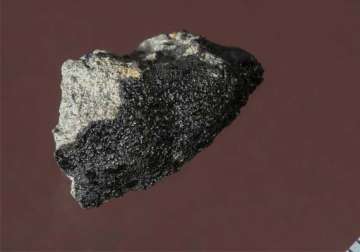London: An international team has performed a detailed analysis of organic carbon traces from a Martian meteorite, concluding that life on Red Planet is more probable than previously thought.
The scientists argue that carbon could have been deposited into the fissures of the rock when it was still on Mars by the infiltration of fluid that was rich in organic matter.
“So far, there is no other theory that we find more compelling,” said Philippe Gillet, director of Swiss Federal Institute of Technology Lausanne's Earth and Planetary Sciences Laboratory (EPFL).
Ejected from Mars after an asteroid crashed on its surface, the meteorite, named Tissint fell on the Moroccan desert July 18, 2011.
The alien rock was found to have small fissures that were filled with carbon-containing matter.
Several research teams have already shown that this component is organic in nature but they are still debating where the carbon came from.
The new study that included researchers from China, Japan and Germany showed that the carbon content were deposited in the Tissint's fissures before it left Mars.
A more likely explanation is that liquids containing organic compounds of biological origin infiltrated Tissint's “mother” rock at low temperatures near the Martian surface.
“Insisting on certainty is unwise, particularly on such a sensitive topic. However, our conclusions are such that they will rekindle the debate as to the possible existence of biological activity on Mars - at least in the past,” Gillet argued.
The paper appeared in the scientific journal Meteoritics and Planetary Sciences.
Latest World News
